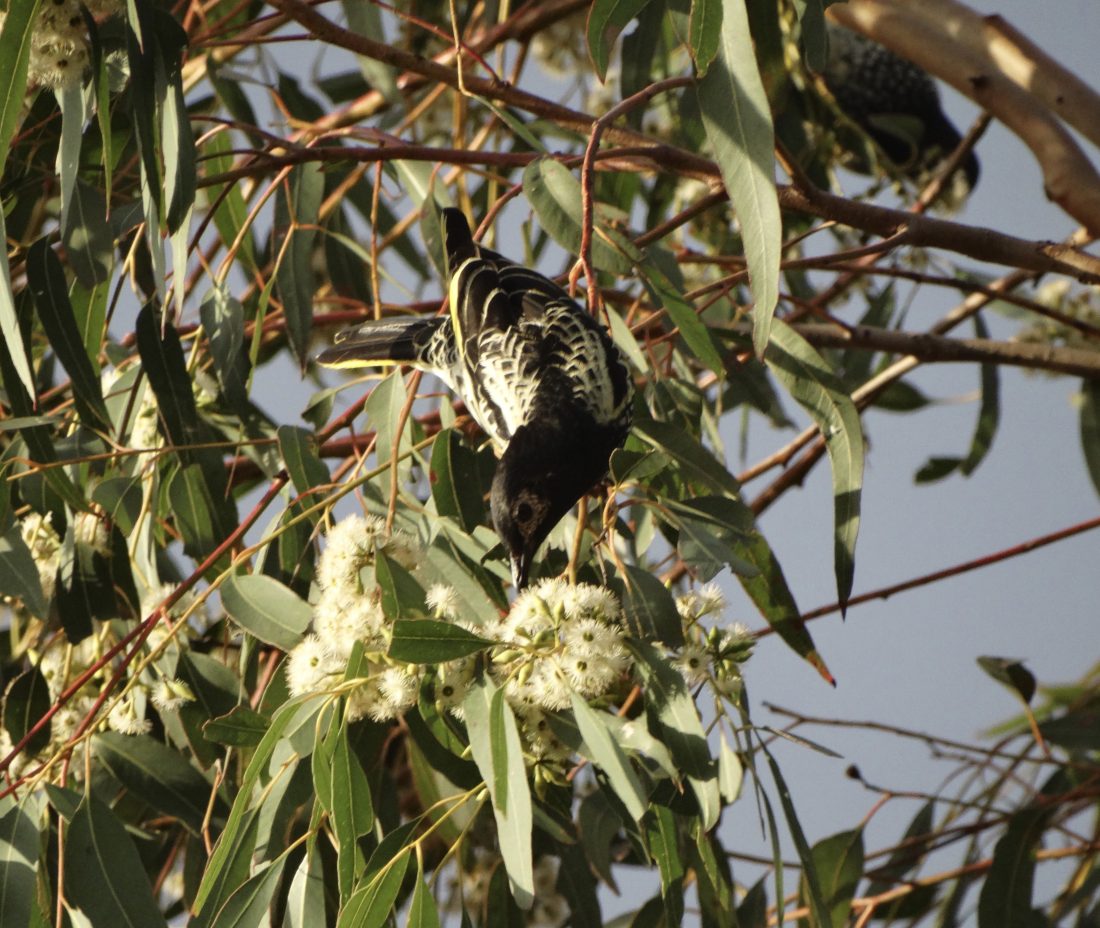A few months ago, the bird-watching community in south-east Queensland went into a twitching frenzy. Two Regent Honeyeaters, a critically endangered species, had been discovered feeding on ironbark blossoms in the suburban heart of Springfield Lakes, on Brisbane’s south-western outskirts, near the satellite city of Ipswich.

The honeyeaters stayed for several weeks, spending the afternoons in a single, heavily flowering tree between a shopping village and childcare centre. When the blossom on that tree and the surrounding ironbarks began to dry up, they began feasting on lerps – tiny, sugary-tasting, sap-sucking insects which clung to the leaves of a small fig tree directly outside a coffee shop.
During that time, dozens of local birders, myself included, watched and photographed the two birds at close quarters. The honeyeaters seemed unperturbed, even as camera drives whirred from a few metres away. They slurped at the blossoms ravenously, and were observed preening each other while resting, indicating they were a closely bonded pair.
For many of the birders, it was the first time they had ever seen the species, and they happily shared their joy with curious passersby. But the joy was tinged with a quiet, collective sadness, too: the knowledge that for many of us, it could also be the last time we ever saw a Regent Honeyeater.
I’ve been watching birds for 40 years, and the first Australian bird book I ever owned described the species as “fairly common”. That was in 1980, and the book was already out of date, but it’s true that the birds were once abundant, swarming the box-ironbark forests and woodlands on either side of the Great Dividing Range in their thousands.
The title of the book was Every Australian Bird Illustrated. But instead of a photo, there was an ancient painting by John Gould (or quite possibly his wife Elizabeth). Most of the other birds in the book featured photographs. The paintings seemed to be of the rarer species. Maybe the honeyeater wasn’t so common any more, I wondered? I certainly couldn’t find any. But then, I was only eight years old.
By the early 1990s, alarm bells were being rung. “Regent Honeyeater: on the brink?” read a headline in the quarterly magazine of the Royal Australasian Ornithologists’ Union (now Birdlife Australia). The bird’s population had crashed, and they were getting harder and harder to find even in old haunts like the Capertee Valley, west of the Blue Mountains in New South Wales.
I’d been birding for over 10 years by then and still hadn’t seen a single one. I’ve since encountered them on a handful of occasions. They are an eye-popping treat, with their chainmail breastplate and wings intricately embroidered in black and sulphur-yellow. (Thankfully, the unkind alternative name “Warty-faced Honeyeater” fell from favour. It really is Regent.)
The reason for the honeyeater’s decline is at once simple and also more complicated than it appears. Once widespread in the most densely populated part of the continent, from around Adelaide in South Australia to well north of Brisbane in Queensland, it is primarily a victim of land clearance and fragmentation.
As the box-ironbark woodlands on which it depended were felled for agriculture, livestock and urban development, the birds declined. Yet other larger honeyeaters, such as miners and friarbirds, seemed to be more resilient, and so did many smaller ones. So why has the Regent Honeyeater fared so poorly?
Research from the Australian National University in Canberra has suggested that a kind of death spiral took hold: the bird had relied on safety in numbers to defend territories and nests from other, more aggressive birds. As their homes fell to the axe and bulldozer and the Regent Honeyeater’s numbers thinned, the less they were able to breed.
Thankfully, the species breeds well in captivity. But how many wild Regent Honeyeaters are left? Estimates seem to depend on who you talk to. The official number is around 400. I’ve heard experienced observers with close knowledge of the species quietly suggest it could be a quarter of that, and more optimistic forecasts that there might be twice as many.
But even 1,000 Regent Honeyeaters thinly scattered in their fragments of remaining habitat between north-east Victoria, the Hunter Valley and western slopes of NSW and south-east Queensland would be a perilous few. The drought gripping NSW makes the remaining birds even more vulnerable: no rain means no blossom.
For a species struggling to catch a break, we’re not helping. The last birds found breeding in NSW were smack bang in the Hunter Economic Zone, a site flagged for the development of a new coal-fired power station. And the state government has passed legislation to raise the Warragamba Dam wall, which will drown another important parcel of habitat.
You might say that the Regent Honeyeater, if you’ll pardon the pun, is a damn unlucky bird: unlucky, mainly, to have lived so closely among and alongside us. And that’s why I’m voting for it in the Guardian/Birdlife Australia’s bird of the year 2019 poll. It’s a symbol of what we can watch disappear from under our noses, no matter how regent it is.
First published in The Guardian, 4 November 2019